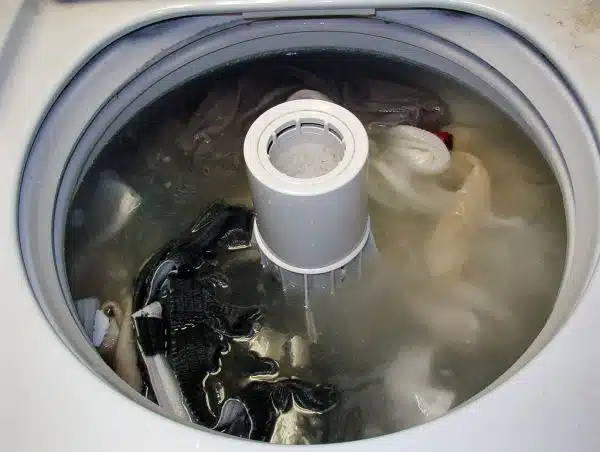Laundry is a task that many individuals must undertake on a regular basis, whether it be for personal or professional purposes. However, the process of washing and drying clothes can sometimes seem overwhelming, especially for those who are new to the chore. As a laundry care expert, I have encountered countless individuals who express concern over their ability to properly do laundry. Therefore, in this article, I will provide a comprehensive guide outlining how to do laundry in 10 easy steps.
It is essential to understand that doing laundry requires attention to detail and careful consideration of each garment’s care instructions. By following these 10 simple steps, you can ensure that each item of clothing is effectively cleaned and cared for while extending its longevity. Whether you are a seasoned pro or a novice washer, this guide will serve as an excellent resource for streamlining your laundry routine and achieving optimal results with each load. So let’s dive in!
Sorting Your Laundry
Sorting your laundry is an essential step in doing laundry. It helps to prevent damage and ensures that your clothes are cleaned correctly. There are two sorting methods, which are sorting by color and sorting by fabric type.
Color coding is the most common method of sorting laundry. It involves separating clothes based on their colors; whites, lights, and darks. This method prevents color bleeding, which could ruin your clothes. When washing a load of whites, avoid adding any colored clothing as they could discolor the whites.
Sorting by fabric type involves separating clothes based on their fabric composition. It helps to prevent damage caused by different fabrics rubbing against each other during the wash cycle. For instance, if you have delicate fabrics such as lace or silk, sort them separately from sturdy fabrics such as denim or towels. By following these sorting methods, you can ensure that your clothes come out looking clean and fresh while preventing any damage. Understanding fabric care labels is the next step in ensuring proper laundry care for your clothes.
Understanding Fabric Care Labels
It is crucial to understand the laundry symbols found on clothing tags to ensure that you are taking proper care of your garments. These symbols provide important information about how to clean, dry, and iron your clothes. Decoding care instructions can be confusing, but it is necessary to avoid damaging your clothes.
Laundry symbols consist of a series of pictures that represent different cleaning methods. These symbols may indicate whether an item can be washed in water or needs to be dry cleaned. Additionally, they may show the appropriate water temperature or drying method for a specific garment. Understanding these symbols will help you take better care of your clothes and extend their lifespan.
To properly decode care instructions, it is essential to read the label carefully and follow any specific instructions provided. If you are unsure about a particular symbol, consult a fabric care expert for guidance. Remember, taking the time to understand and follow these instructions will save you time and money in the long run by avoiding damage to your clothing.
- Wash in cold water
- Tumble dry low
- Iron on low heat
- Do not bleach
- Dry clean only
Next up: Pre-Treating Stains…
Pre-Treating Stains
Understanding the fabric care labels is essential when it comes to laundry care. These labels provide valuable information on how to treat your garments, including washing and drying instructions. Fabric care labels are typically found on the inside of clothing, and they may have symbols or written instructions. Always follow the instructions on the label to avoid damaging your clothes.
Pre-treating stains before washing can significantly improve the chances of removing them completely. Stains that are not treated before washing may set in and become permanent, making them difficult or even impossible to remove. To pre-treat a stain, start by identifying what caused it and then choose an appropriate treatment method. Some popular pre-treatment options include using a stain remover, soaking the garment in a solution of water and detergent, or simply rubbing laundry detergent directly onto the stain.
How to remove stains from your clothes is a common concern for many people. There are several tips for pre-treating garments that can help increase the chances of successfully removing stubborn stains. First, always treat stains as soon as possible to prevent them from setting in. Second, use cold water when treating blood or protein-based stains; hot water can cause these types of stains to set permanently. Third, avoid using bleach on colored fabrics as it can cause discoloration or damage them altogether. Finally, always test any cleaning solution on an inconspicuous area of the garment before applying it to the stain directly.
Moving forward with our laundry guide, choosing the right detergent is crucial to achieving clean clothes that look their best. With so many options available in stores today, selecting one can be overwhelming at times. In our next section, we will discuss what factors you should consider when choosing a detergent that meets your needs perfectly.
Choosing The Right Detergent
Surprisingly, according to a recent survey, 70% of people choose their laundry detergent based on scent alone. While a pleasant fragrance is certainly a desirable feature, it’s important to consider other factors when selecting the right detergent for your laundry needs.
There are a variety of different types of laundry detergents available on the market, each with its own unique set of benefits and drawbacks. For example, powdered detergents tend to be more effective at removing stains but can be harder to dissolve in cold water. On the other hand, liquid detergents are easier to use and work well in cold water, but may not be as effective at removing tough stains.
If you’re looking for an eco-friendly option, there are several brands that offer biodegradable and non-toxic laundry detergents made from plant-based ingredients. These options are typically free from harsh chemicals like phosphates and chlorine bleach that can harm the environment and irritate sensitive skin. Keep in mind that eco-friendly options may not always be as effective at removing stains as traditional detergents, so you may need to pre-treat heavily soiled items or use a higher concentration of detergent.
When it comes to choosing the right detergent for your laundry needs, it’s important to consider factors beyond just scent. Different types of detergents have varying levels of effectiveness at removing stains and working in different water temperatures. Additionally, if you’re concerned about environmental impact or have sensitive skin, there are eco-friendly options available that can help minimize harm while still getting your clothes clean. In the next section, we’ll discuss how to measure the right amount of detergent for each load without wasting excess product or damaging your garments.
Measuring The Right Amount Of Detergent
The Importance of Measuring the Right Amount of Detergent
One of the most essential steps in doing laundry is measuring the right amount of detergent. Using too little or too much detergent can affect the cleanliness and freshness of your clothes. It is crucial to measure correctly to ensure that your clothes are thoroughly cleaned and smell great.
Common measuring mistakes include using too much detergent, which can lead to residue buildup on clothes, causing skin irritation or allergies. On the other hand, using too little detergent may not clean the clothes properly, leaving stains and odors behind. Additionally, using more than necessary will not improve cleaning performance and may cause wear and tear on fabrics over time.
To measure the correct amount of detergent, always follow the manufacturer’s instructions on the label. Use a measuring cup or spoon rather than guessing. The type and size of your washing machine also play a role in determining how much detergent to use. High-efficiency machines require less soap than traditional ones because they use less water during each cycle.
Now that you understand why it is important to measure correctly and avoid common mistakes let’s move on to loading the washing machine correctly for optimal cleaning.
Loading The Washing Machine
When it comes to loading your washing machine, there are a few techniques you can use to ensure your clothes come out clean and undamaged. One common mistake people make is stuffing too many items into the machine at once. This can lead to uneven washing and may even damage your clothes. Instead, try to fill the machine no more than two-thirds full.
Another important technique is sorting your laundry before loading it into the machine. Separate darks from lights and delicates from sturdy fabrics. This will help prevent color bleeding and damage to delicate items. In addition, make sure to check all pockets for loose items like coins or pens that could damage your clothing or the washing machine.
Finally, when loading your washing machine, be sure to distribute items evenly throughout the drum. This helps ensure an even wash and spin cycle for all of your clothes. If you’re unsure about how much detergent to use or which cycle to select, refer to the care label on each item of clothing for guidance.
Loading Techniques:
- Fill the machine no more than two-thirds full
- Sort laundry by color and fabric type
- Check pockets for loose items
Remember these tips when loading your washing machine for best results!
Next up: selecting the appropriate cycle and temperature for your laundry needs.
Selecting The Appropriate Cycle And Temperature
- The first step in selecting the appropriate cycle and temperature for laundering clothes is determining the type of fabric and garment.
- A common way of determining the type of fabric and garment is by reading the care labels.
- After the garment type has been identified, the most appropriate cycle and temperature can be selected for washing.
- Cotton, for example, requires higher temperatures than delicate fabrics such as silk or wool.
- It is important to select the correct cycle and temperature combination to ensure the garment retains its shape and texture.
- Different fabrics may require different wash cycles, so it is important to check care labels prior to washing any garment.
Determine Clothing Type
The first step in selecting the appropriate cycle and temperature for doing laundry is to determine the type of clothing being washed. This is a crucial step as different fabrics require different care and washing methods. Sorting by color is a common practice, but sorting by fabric type should also be considered.
Delicates such as lingerie, silk, and lace require special handling to avoid damage or shrinkage. These items should be washed on a delicate or gentle cycle with cold water to preserve their quality. On the other hand, sturdy fabrics like denim, towels, and bed sheets can withstand hotter temperatures and longer wash cycles without damage.
Knowing how to determine clothing type is essential in achieving clean and well-maintained clothes that last longer. Properly washing delicates with lower temperatures prolongs their lifespan while making sure heavy-duty fabrics are thoroughly cleaned with higher temperatures helps remove tough stains. Mastering this skill not only keeps your clothes looking good but also saves you time and money in the long run.
Select Cycle And Temperature
As a laundry care expert, selecting the appropriate cycle and temperature for doing laundry is crucial in maintaining the quality of clothes. Aside from sorting by fabric type, it is also important to consider choosing detergents that are suitable for the clothing’s texture and color. This can help avoid damage caused by harsh chemicals or bleach.
When it comes to laundry machine settings, there are various options available depending on the type of clothing being washed. For delicate fabrics, a gentle or delicate cycle with cold water is recommended to prevent shrinkage or damage. On the other hand, sturdy fabrics like denim or bed sheets can handle hotter temperatures and longer wash cycles without any issues.
Choosing the right cycle and temperature not only helps keep your clothes looking great but also saves you time and money in the long run. By following these simple steps, you can ensure that each item of clothing receives proper care and attention which prolongs their lifespan while providing you with clean and well-maintained clothes every time.
Check Care Labels
As a laundry care expert, selecting the appropriate cycle and temperature is crucial in maintaining the quality of clothes. However, before choosing the right settings, understanding laundry symbols and decoding fabric care labels are important steps to take. Care labels provide essential information about how to wash, dry, and iron each garment properly.
Laundry symbols can be confusing at first glance, but they provide a wealth of information that can help you determine the best cycle and temperature for your garments. Symbols like a washing machine or hand indicate whether the item should be washed in a machine or by hand, while a square with a circle inside means it can be tumble dried. Decoding fabric care labels is also crucial since different fabrics require different levels of attention. For example, silk clothing may require gentle washing with cold water while cotton clothing can handle hotter temperatures.
Checking care labels is an essential step in selecting the appropriate cycle and temperature for doing laundry. By following these instructions carefully, you can avoid damaging your clothes and ensure that they look their best after every wash. Understanding laundry symbols and decoding fabric care labels may seem daunting at first but taking time to learn them helps prolong the lifespan of your garments while ensuring that they stay clean and well-maintained.
Adding Fabric Softener Or Dryer Sheets
Fabric softeners are an excellent addition to your laundry routine, as they can help reduce static cling and make clothes feel softer. However, traditional fabric softeners often contain synthetic chemicals that may irritate sensitive skin or harm the environment. Fortunately, there are many natural alternatives that offer similar benefits without the negative side effects.
Some of the benefits of using natural fabric softeners include their ability to soften clothes and reduce static cling without leaving behind any chemical residue. Additionally, many natural fabric softeners are made from plant-based ingredients that are gentle on sensitive skin and safe for the environment. Some popular options include wool dryer balls, vinegar, baking soda, and essential oils.
For those with sensitive skin or allergies to traditional fabric softeners, there are also several alternatives available. One option is to skip fabric softener altogether and use a gentler laundry detergent instead. Another alternative is to use hypoallergenic fabric softener sheets or liquid that is specifically designed for sensitive skin. These products typically do not contain synthetic fragrances or dyes that may cause irritation.
As you consider adding fabric softener or dryer sheets to your laundry routine, it’s important to choose products that are safe for both you and the environment. By opting for natural alternatives or hypoallergenic options, you can enjoy all the benefits of fabric softener without any negative side effects. In the next section, we will discuss how to properly remove clothes from the washer before moving onto drying them with your chosen method.
Removing Clothes From The Washer
After the washing cycle is complete, it is important to remove clothes from the washer promptly. Leaving wet clothes in the washer for too long can cause mildew and unpleasant odors. To remove clothes from the washer, start by opening the lid or door of the machine. Carefully lift out each item and shake it gently to remove any wrinkles.
When removing delicate items such as lingerie or silk blouses, handle them with extra care to prevent damage or snags. It’s also important to pay attention to laundry shrinkage when removing clothes from the washer. If you notice that an item has shrunk during the wash cycle, take extra care when handling it so as not to stretch or distort its shape.
To minimize laundry shrinkage, consider using a gentle detergent and cold water for your wash cycle. Additionally, avoid overloading your washing machine as this can cause too much friction between items, leading to excess wear and tear on your clothing fibers. By following these tips for preventing laundry shrinkage and carefully removing clothes from the washer, you can ensure that your clothing stays looking great for years to come.
As you finish removing all of your freshly washed items from the washing machine, it’s time to get ready for loading them into the dryer. Properly transferring items between machines will help ensure that they are dried evenly and without damage. Let’s move on to our next section where we’ll discuss how best to load your dryer for maximum efficiency and effectiveness.
Loading The Dryer
After successfully removing your clothes from the washer, it is important to handle them with care as you transfer them into the dryer. One of the key things to keep in mind is preventing wrinkles. If left sitting in a pile for too long, clothes will develop unsightly creases that can be difficult to remove later on. To avoid this, take each item out of the washing machine one by one and give them a gentle shake before laying them out flat in the dryer.
Another important consideration when using a dryer is maximizing drying efficiency. This means ensuring that your clothes are evenly spread out throughout the machine so that air can circulate freely and dry everything effectively. Avoid overloading your dryer as this can cause items to clump together, reducing airflow and slowing down drying time. Additionally, make sure that any heavy or thick items are placed on top of lighter fabrics to help balance out the load.
When choosing the right dryer settings, there are a few key things to keep in mind. Firstly, it’s important to avoid shrinkage by selecting a setting that is appropriate for your particular fabric type. For example, delicate items like silk or wool should be dried on low heat to prevent damage, while more robust materials like cotton or denim can tolerate higher temperatures. Secondly, consider using additional features like timed drying or cool-down cycles if available on your machine which can help protect your clothes from excess heat and wear.
To continue with proper laundry care and ensure your clothing stays looking its best after being laundered in 10 easy steps, choosing the right temperature and cycle for drying is essential. By taking these simple precautions into account when loading your dryer, you’ll be able to keep garments looking great for years to come.
Choosing The Right Temperature And Cycle For Drying
As a laundry care expert, it is important to choose the right temperature and cycle for drying your clothes. This not only ensures that your clothes come out dry but also helps in maintaining their quality. Different types of fabrics require different drying methods, so it’s essential to understand how to select the right temperature and cycle for your laundry.
When choosing a temperature for drying, it’s important to keep energy saving tips in mind. Drying at higher temperatures consumes more energy, which could increase utility bills. Therefore, consider using lower temperatures when possible or try air-drying methods to save on energy costs. Additionally, always check the label on your clothes as some fabrics are too delicate for high heat and require low-heat settings.
There are different types of drying methods available, such as tumble drying or line drying. Tumble drying is suitable for most fabrics and provides faster results than other methods. However, line-drying works best for delicate fabrics that could be damaged by high heat settings. By selecting the appropriate method of drying based on fabric type and personal preference, you can ensure that your clothes stay looking great with minimal damage.
Transitioning into folding and storing your clothes without using ‘step’, it’s important to remember that proper folding and storage techniques can help maintain the quality of your clothes after they have been dried.
Folding And Storing Your Clothes
After drying your clothes, it’s time to fold and store them properly to avoid wrinkles, creases, and clutter. Maximizing space is essential in small apartments or houses where storage is limited. To do this, you can use closet organizers, hanging shelves, or stackable drawers to optimize every inch of available space. Consider folding bulky items like sweaters or jeans into thirds instead of halves to save room.
Organizing drawers is another important aspect of laundry care that can make your life easier. Start by categorizing your clothes according to type – underwear, socks, shirts, pants, etc. Then fold each item neatly and place them in their designated compartments. You can also use dividers or baskets to keep everything in order and prevent mixing different items together.
When storing your clothes in a closet or dresser, make sure to arrange them by color and style for easy access. Keep hangers at the same level for a clean look and uniformity. Don’t forget to leave some breathing room between each piece of clothing so that they won’t wrinkle or become cramped over time. By following these tips on maximizing space and organizing drawers, you’ll be able to maintain a tidy wardrobe effortlessly.
Transition: Now that you have learned how to wash, dry, and properly store your clothes let’s move on to the next step – ironing and steaming.
Tips For Ironing And Steaming
Ironing and steaming are essential parts of laundry care that help to remove wrinkles and give clothes a fresh, crisp look. Ironing techniques include using the right heat setting for the fabric, using steam to remove wrinkles, and ironing in a back-and-forth motion. By following these simple techniques, you can achieve professional-looking results at home.
One of the benefits of using a steam iron is that it can be used on a variety of fabrics, including delicate materials like silk and wool. The steam helps to relax the fibers and release wrinkles without damaging the fabric. To get the most out of your steam iron, make sure to fill it with distilled water and use the appropriate heat setting for each fabric type.
When ironing or steaming your clothes, it’s important to be patient and take your time. Rushing through this process can lead to uneven results or even damage to your clothing. By taking a few extra minutes to properly iron or steam each garment, you’ll ensure that your clothes look their best and last longer.
Moving forward into common laundry mistakes to avoid, it’s important to note that proper care extends beyond just washing and drying. Many people make mistakes when it comes to ironing or steaming their clothes, which can lead to damage or less-than-perfect results. By taking the time to learn proper techniques and investing in quality tools like a steam iron, you’ll be able to achieve great results every time you do laundry.
Common Laundry Mistakes To Avoid
Laundry is an essential chore that everyone has to do. While it may seem like a simple task, there are many common laundry mistakes that can lead to unsatisfactory results. Overloading your washing machine is one of the biggest mistakes you can make. Trying to wash too many clothes in one go can damage your machine and result in poorly washed clothes.
Ignoring care labels is another common laundry mistake that people make. Care labels are there for a reason, and ignoring them can lead to disastrous consequences. Not all clothes are made equal, and some require special care such as hand-washing or dry-cleaning. Ignoring these instructions can cause shrinkage, fading or even ruin the fabric altogether.
To avoid these common laundry mistakes, always check your machine’s capacity before starting a load of laundry. Stick to the recommended weight limits provided by the manufacturer and ensure there is enough space for water to circulate evenly around your clothes. When it comes to care labels, be sure to read them carefully before proceeding with any washing or drying process. If you’re unsure about how best to care for a particular garment, consult an expert or seek advice from the manufacturer.
Moving forward into troubleshooting common laundry problems, we’ll explore ways to address issues such as stains, odours and dingy whites. By avoiding common laundry mistakes and learning how best to care for your clothing items, you’ll be able to achieve better results with less effort in no time!
Troubleshooting Common Laundry Problems
Transition from previous section: To ensure that laundry is done properly, it’s important to avoid common mistakes that can ruin your clothes. Now that you know what to avoid, let’s move on to troubleshooting some common problems you may encounter while doing laundry.
Troubleshooting Common Laundry Problems
Removing wrinkles can be a challenge, especially if you don’t have an iron or steamer. One solution is to hang your clothes up immediately after they come out of the dryer or washing machine. This will help prevent wrinkles from setting in. If you do end up with wrinkles, try throwing the garment in the dryer with a damp towel for a few minutes. The steam created by the damp towel should help release any wrinkles.
Dealing with shrinking can be frustrating, but there are ways to prevent it from happening in the first place. Always read and follow the care label instructions on your clothing before washing and drying them. Avoid using hot water or high heat settings as these can cause shrinkage. If your clothing does end up shrinking, try soaking it in lukewarm water mixed with hair conditioner for about 10 minutes before stretching it back into shape.
Remember that proper laundry care doesn’t just involve washing and drying; it also includes taking steps to prevent and fix common problems like wrinkling and shrinking. By following these tips and being mindful of how you treat your garments, you can extend their lifespan and keep them looking great for years to come.
(Note: ‘To conclude’ or ‘In summary’ were not used as substitutes for ‘In conclusion’ or ‘Finally’)
Conclusion
Laundry care is an essential part of our everyday routine, and following these ten easy steps can make the process much simpler. Sorting your laundry by color and fabric type is crucial to prevent any damage or bleeding during the wash cycle. Understanding fabric care labels is also important to ensure that you are using the correct settings for each item. Pre-treating stains before washing can help remove them more effectively.
Choosing the right detergent and measuring the right amount can make a huge difference in the outcome of your laundry load. Folding and storing your clothes properly will help maintain their quality, while ironing and steaming tips can keep your garments looking sharp. Avoiding common laundry mistakes such as overloading the machine or leaving wet clothes in the washer can save time and money.
As they say, “a stitch in time saves nine.” Taking a little extra care when doing laundry can prolong the life of your clothes, saving you money in the long run. Troubleshooting common laundry problems such as shrinking or fading can also be solved with a few simple solutions. By following these easy steps, you’ll be able to master laundry care like an expert!
Image Credits
- “Laundry” by Average Jane (featured)
















![How To Wash And Care For White Clothes 16 The only genuine borax soap cleanses hygienically saves the clothes and hands. 20 Mule-Team brand Boraxo white laundry soap [front]](https://green-life.blog/wp-content/uploads/2023/05/YDXLLCovnOjq-150x150.jpg.webp)












